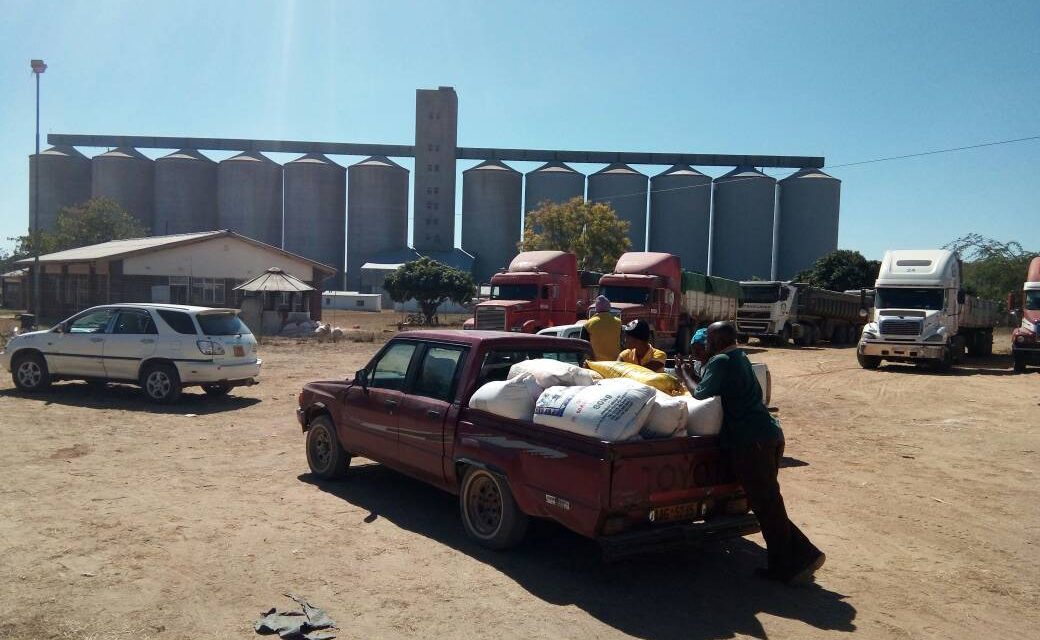Grain purchase could trigger inflation, disgruntle farmers
The Government and the central bank will have to strike a balancing act if they are to fund the upcoming agricultural produce without triggering inflation or disappointing farmers.
The country is expecting a bumper harvest in the 2020/21 agricultural season, but funding of that crop, if not carefully managed, will trigger inflation.
In the years past, increased Government and central bank funding of national projects resulted in high inflationary pressures that led to the collapse of the local currency.
A repeat of such funding structures and the resultant money supply growth has the potential to reverse gains that have been made in terms of price and exchange rate stability.
According to the Government, through Information, Publicity and Broadcasting Services Minister Monica Mutsvangwa, the country is expecting national production of 2,5 to 2,8 million tonnes of maize and 360 000 tonnes of traditional grains for the 2020/21 agricultural season.
On the basis of the afore-stated estimates, deliveries to the Grain Marketing Board (GMB) are expected to be 2 million tonnes of cereals.
Maize will constitute 1,8 million tonnes of the expected deliveries to GMB.
Maize deliveries to GMB will be valued at $57,6 billion using the pre-planting producer price of $32 000 per tonne announced by the Government in December last year.
This has raised fears that the Government might not have the capacity to fund maize purchases without triggering inflation.
In fact, resources in the banking sector might not be enough to fund grain purchase if the bumper harvest comes to fruition.
The value of the expected maize harvest at $57,6 billion, is 69 percent of the total banking sector local currency deposits of $83,5 billion.
Liquid assets are even lower, with banks’ RTGS balances at the RBZ amounting to $14,46 billion as at February 19, 2021.
The Government local currency deposits at the central bank have been averaging below $10 billion since June 2020. Reserve Money is also averaging just below $20 billion.
Liquid local currency resources are needed to pay for foreign currency from exporters including tobacco farmers coming to the market at the same time as maize farmers.
Former Monetary Policy Committee member, Eddie Cross acknowledged the mammoth task faced by authorities, and said the only route that must be avoided at all cost is for authorities to resort to printing to fund the harvest.
He suggested that the central bank has to find ways of unlocking liquidity from the private sector and the banking sector including releasing funds locked in savings bonds.
He said the most sustainable way is for the Government to spread payments to farmers as it did with the 2020 winter wheat crop.
Payments for the winter wheat crop were delayed with the GMB having to resort to waiting for sales to millers in order to pay farmers.
Delayed payments could, however, lead to the disgruntlement of farmers which might affect preparations of the next cropping season.
“I think it is possible but it’s going to need careful management. The fundamental principle is not to print, if we do that we will blow away all the progress made so far,” Cross said.
Permanent Secretary in the Ministry of Finance George Guvamatanga said all is in order as government is putting into place adequate resources for the initial deliveries.
He said grain deliveries would be spread for at least six months giving room for resource mobilisation.
“Grain procurement and sales is a revolving fund. Millers normally fund their initial requirements upfront which provides the initial funding for grain.
“Grain purchase is done over a period of about six months so the liquidity is not required as a lump sum.
“As we are buying we are also selling,” Guvamatanga said.
However, with households likely to keep another 1 million tonnes of maize in their granaries, sales from GMB are likely going to be slow and impacting the grain procurement and sales cycle and effectively funding.
Guvamatanga, however, highlighted the fact that most farmers were funded through smart agriculture and the farmers have stop orders for loan repayments with their banks.
“Of which the banks were funded via the stimulus package and some of the repayments will be due to the Government and the RBZ,” Guvamatanga said.
According to statistics from the central bank, funding to the agricultural sector amounted to 28 percent of total loans of $82,4 billion in 2020.
With part of these funds having come from the Government and the central bank, it will lessen the burden of paying farmers.-ebusinessweekly.c.zw











